Ever heard of Salsa Golf? This is an Argentine sauce that strikes the perfect balance between creamy and savory. While it’s not as well known as chimichurri, it’s still very popular in Argentina, especially to accompany Argentine asado. Curious about how it tastes? Here you have the details to prepare your batch at home.
The beginnings of Salsa Golf are wrapped in food stories, with different ideas about where it came from. Most stories claim it was invented by Argentine golfers who wanted a tasty sauce for their meals while playing golf. They supposedly mixed two common ingredients, mayonnaise and ketchup, to make a sauce that went well with many foods, especially burgers.
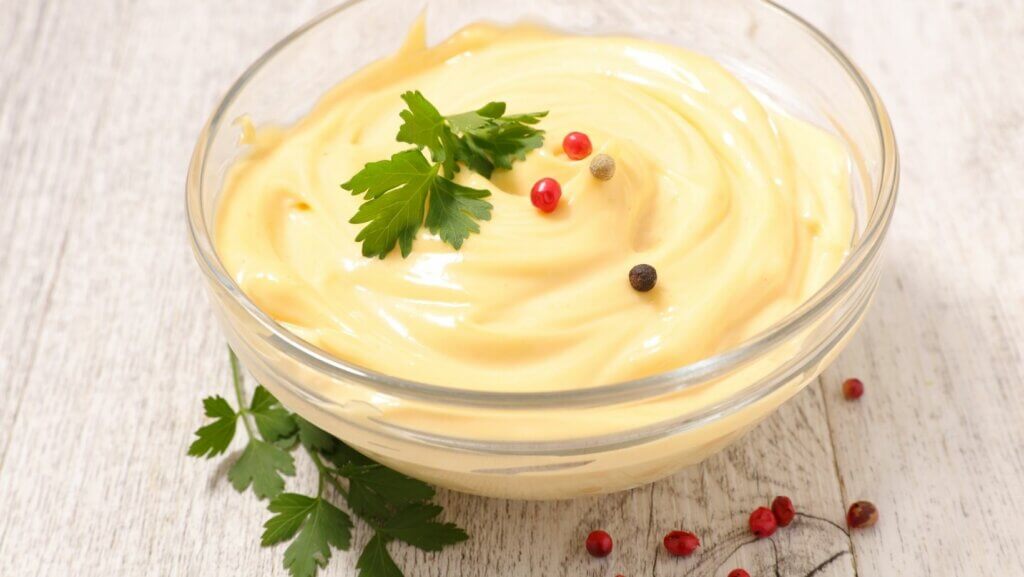
1 cup mayonnaise
1/4 cup ketchup
1 tablespoon lemon juice
1 teaspoon Worcestershire sauce
1 teaspoon Dijon mustard
1 clove garlic, minced
Start by combining the mayonnaise and ketchup in a mixing bowl. Use a whisk or spatula to thoroughly mix both ingredients until the mixture is smooth and uniform in color.
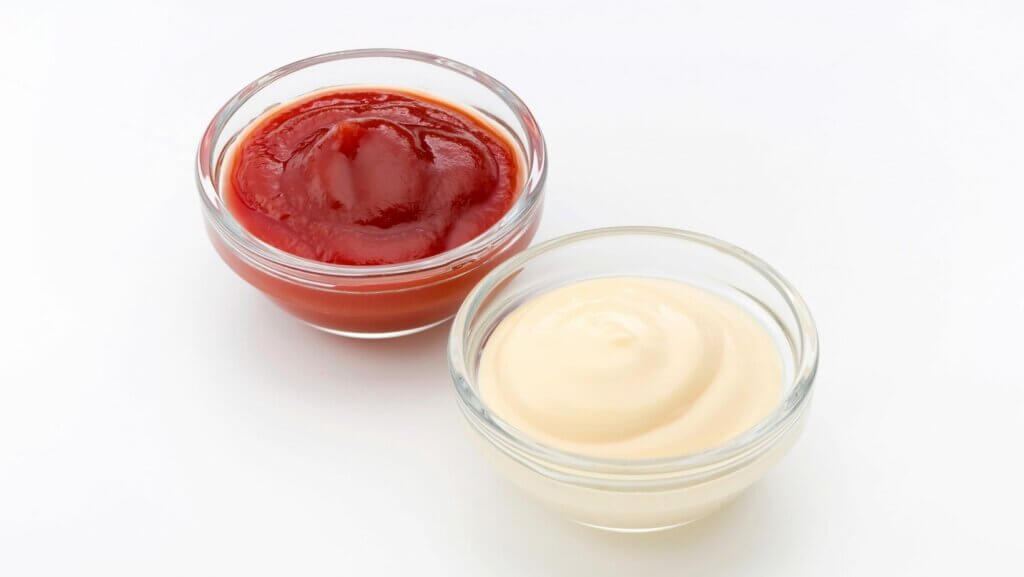
Taste the mixture as you go and adjust the ratio of mayonnaise to ketchup according to your preference for creaminess or tanginess. For a creamier sauce, add more mayonnaise, and for a tangier sauce, add more ketchup.
And if you prefer sweeter flavors, consider using sweetened ketchup or adding a touch of honey or sugar to make your Salsa Golf even tastier!
Squeeze in the fresh lemon juice to give the sauce a bright and citrusy flavor. Avoid using bottled lemon juice, as it may lack freshness. A piece of advice: start with a small amount of lemon juice and gradually increase to taste, as it can easily overpower the other ingredients.
Pour in the Worcestershire sauce and the Dijon Mustard, which helps emulsify the ingredients and create a smooth and creamy texture. Opt for quality Worcestershire sauce and Dijon mustard for the best taste. Cheaper varieties may lack depth and complexity, ruining your Salsa Golf.
Finely mince a clove of garlic and add it to the sauce. Alternatively, you can use a garlic press for convenience. And if you’re not a fan of the sharpness of raw garlic, you can briefly sauté it in a small amount of olive oil before adding it to the Salsa Golf. Refrigerate the sauce for at least 30 minutes, or preferably longer, to allow your Salsa Golf to meld together.
Salsa Golf is a versatile sauce that pairs deliciously with a variety of foods, adding a flavorful twist to traditional dishes like Argentine asado or seafood. Here is a list of some popular Argentine foods that complement Salsa Golf exceptionally well:
You can also experiment with additional ingredients to customize the taste of your Salsa Golf, such as adding a dash of hot sauce for extra heat or a sprinkle of paprika for a smoky undertone. And hey, if by some miracle you don’t finish the whole batch, just stash any leftovers in an airtight container in the fridge for up to a week.
So, the next time you find yourself in Argentina, be sure to keep an eye out for these sauces and explore the diverse flavors that this iconic condiment has to offer. Or maybe you’d like to experiment at home and expand your Argentine Asado repertoire with this Salsa Golf recipe. Enjoy!
Are you looking forward to your weekly asado but find yourself not knowing which sauce to use for your choripan or your t-bone steak? Enter the classic chimichurri, the most well-known Argentine sauce and the perfect companion to grilled meats.
Made with fresh parsley, garlic, oregano, and a hint of chili pepper, chimichurri can be the perfect complement to your Argentine asado. And if you’re not sure how to prepare it, here’s a step-by-step guide to prepare the classic chimichurri recipe – the best you’ve ever tasted. Shall we?
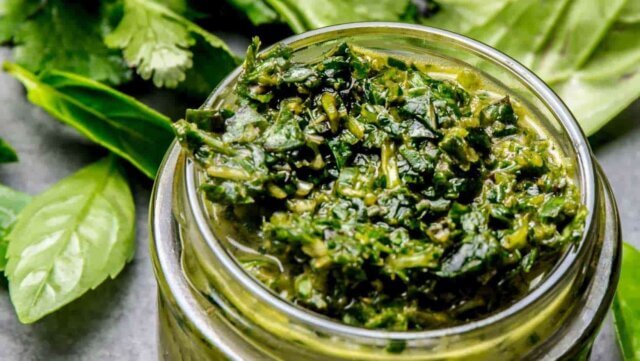
Where does the eccentric name “chimichurri” come from? Its exact origins are somewhat debated, but it’s widely believed to have originated in Argentina, particularly among the gauchos who roamed the Argentine pampas during the 19th century.
Regarding its name, some people propose that it’s derived from the Basque word “tximitxurri,” meaning “a mixture of several things in no particular order,” which aptly describes the way this sauce is made.
Today, chimichurri’s popularity has spread far beyond the borders of Argentina and Uruguay, gaining recognition as a versatile condiment that pairs excellently with grilled meats, including beef, pork, chicken chorizo, and Patagonian lamb.
1 cup fresh parsley, finely chopped
4 cloves garlic, minced
1/4 cup white vinegar
1/2 cup extra-virgin olive oil
1 tablespoon dried oregano
1 teaspoon red pepper flakes (adjust to taste)
Salt and pepper to taste
Start by finely chopping the fresh parsley and mincing the garlic cloves, then put them into the same bowl. Even though it may be tempting to save time, avoid using dried parsley or garlic powder, as they won’t have the same taste.
Then, pour the white vinegar over the parsley and garlic mixture; its acidity will help balance the flavours and give the sauce its signature tang.
If it’s your first time tasting chimichurri, perhaps you’d like to make it with milder acidity and a slightly sweeter undertone. In that case, you can use apple cider vinegar. Others prefer to prepare this sauce with red wine vinegar, which makes it stronger.
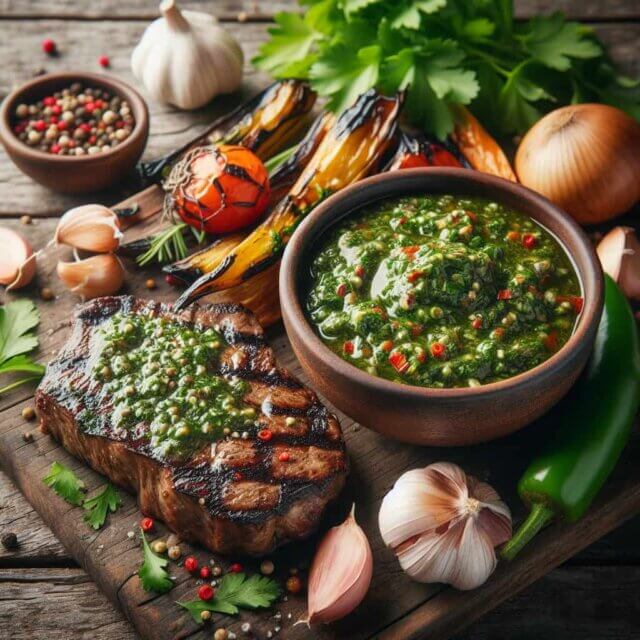
Now, slowly drizzle the extra-virgin olive oil into the bowl, whisking continuously to emulsify the ingredients. You may find that some recipes opt for a blend of oils instead of just extra-virgin olive oil.
For example, sunflower oil is very popular in Argentine cuisine, with its neutral taste and high smoke point. When it comes to chimichurri, it can add a lighter texture and ensure the sauce maintains its green color.
Sprinkle the dried oregano and red pepper flakes (ají molido) over the mixture, then season with salt and pepper to taste while using a spoon or whisk to mix all the ingredients together.
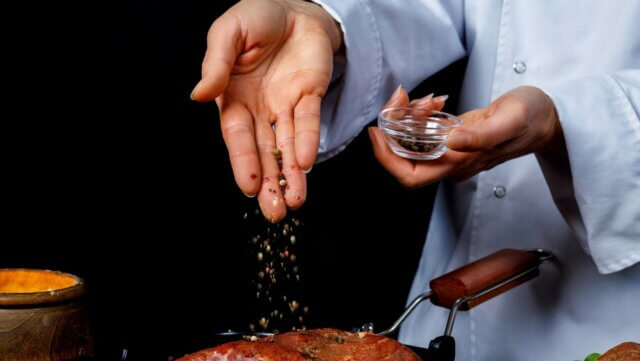
If you’re looking to experiment, some spices can make your chimichurri a bit more unique:
It’s time to taste your chimichurri and fine-tune it to your taste. So, grab a spoon, put a bit of the sauce on a piece of bread and taste it!
Perhaps you find that the chimichurri could benefit from a touch more acidity, so you can add more vinegar. Or maybe you realize you put too much ají molido, which you can solve by adding more oil.
Time for the grand finale: cover the sauce and let it sit at room temperature for at least 30 minutes (don’t be tempted into using it right away!). Freshly prepared chimichurri can sometimes have sharp, intense flavors, particularly from the raw garlic and vinegar, that won’t be tasty.
Instead, allowing your chimichurri sauce to rest will significantly enhance its texture while balancing its taste. Some experts even suggest preparing chimichurri a few days in advance or even weeks before you plan to use it to maximize its development.
And that’s it. Chimichurri is a versatile sauce, suitable to complement not only grilled meats but also seafood. So, the next time you find yourself in Argentina, be sure to keep an eye out for freshly prepared chimichurri and explore what this iconic condiment has to offer.
Or maybe you’d like to experiment at home and expand your Argentine grilling repertoire with this step-by-step chimichurri recipe. Enjoy!
 What's in it for You Every Month on Saturday?
What's in it for You Every Month on Saturday? Special Bonus: Sign up now and get a FREE guide: "5 Secrets to Perfect Asado Every Time"
Special Bonus: Sign up now and get a FREE guide: "5 Secrets to Perfect Asado Every Time"